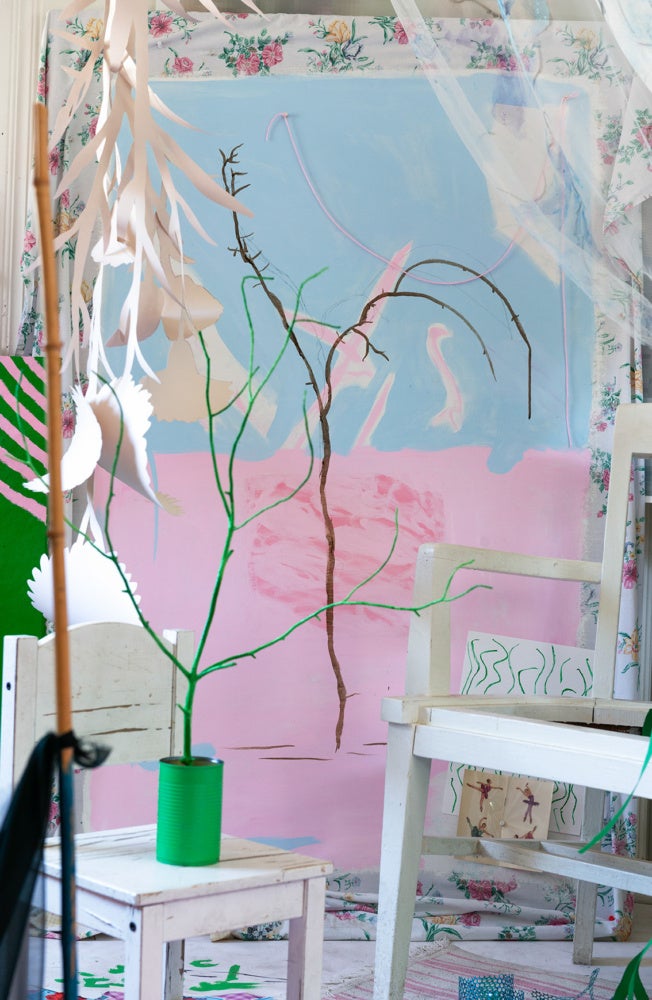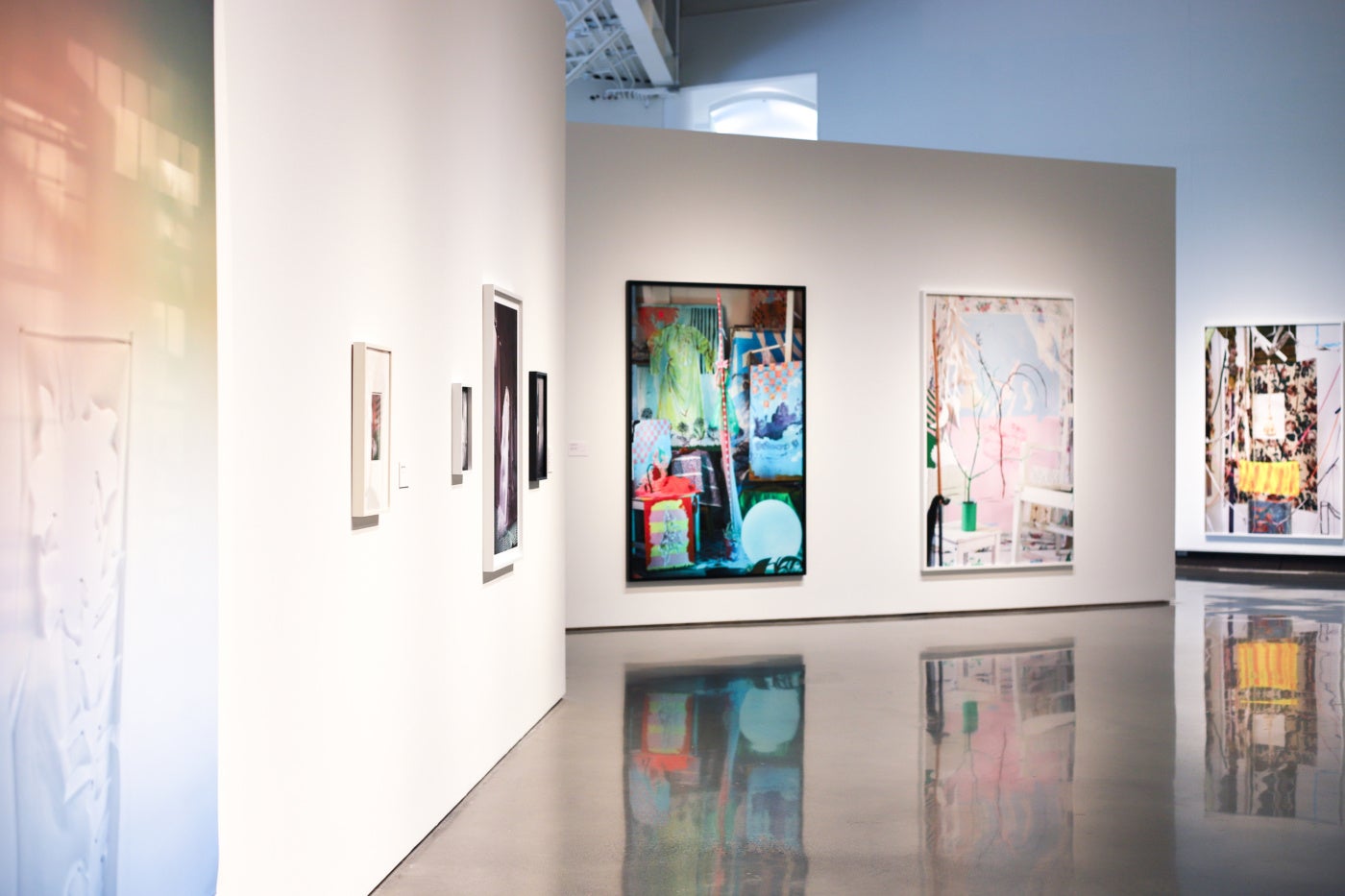
Flutter is flirty. David Gilbert’s works, photographic documents of slap-dash sculptures and painterly interventions in often dramatic natural light, are charming and engrossing–but they’re also taunting. At first glance, it’s easy to want more: to want to see the sculptures in the round, to want to interact with the colorful detritus depicted, or to simply explore Gilbert’s studio, where many of these scenes are arranged. (It must have such fantastic windows.) But the impertinence and distance his photographs provide are precisely the strengths of his overarching project. A testament to fleeting gestures, facetious sensibilities, and queer ingenuity, Gilbert’s poetic works saunter and serve together in Flutter, the artist’s first institutional show and widest presentation of his oeuvre to date.
Take Center Stage (2020), a photo printed on matte paper slightly larger than life-sized in a simple white frame. The focal point is the backdrop, a painting of a paltry Charlie-Brown-style thin, leafless tree standing tall against a pastel pink and robin’s egg blue background. Closer to the lens, a kelly-green limb sticks out of a matching aluminum can. It’s out of focus but commands attention with its branches spread like arms wide open, its twigs mimicking jazz hands. White chairs and a tall bamboo stake crowd the edge of the frame, along with paper cut-outs of flowers, a motif repeated throughout the exhibition, and crumpled lace or netting, a translucent curtain framing the tableau. Given the work’s title, and the layered setup, it’s easy to see this scene as a drama–the twigs and poles as actors, suspended forever in a moment of apprehension, of missed cues delivered with shining confidence.
Confronting Gilbert’s photographs in person allows you to scrutinize the details. In Center Stage (2020), I kept coming back to the brushstrokes gliding onto the floral bedspread. I focused on the four illustrations of ballet dancers in the bottom right, covered in cellophane, insinuating they were ripped from a book of temporary tattoos. Couldn’t help but notice the peek of crown molding in the top left corner. Trying to find all the slippages, hints, and reveals becomes engrossing and rewarding. Much like the machinations of desire, the more time you spend with this work, the more you’ve grown to realize it was everything you wanted all along.

In the introductory wall text, curator Jared Ledesma writes that Gilbert’s “artistic practice is difficult to categorize,” noting that Gilbert is at once a painter, sculptor, and photographer. Viewing Gilbert’s practice in conversation with generations of queer artists who utilize domestic and studio spaces as a unique third place–hiding from the world by creating a sanctuary of freedom, exploration, and camaraderie–is where his works, however you want to classify them, feel most powerful. Pieces by Rauschenberg, Catherine Opie, and Paul Mpagi Sepuya come to mind, of course, but so do the vernacular photos from Casa Susanna and countless others hidden in nightstands, boxes, storage units, and landfills.
However, unlike those photographs, Gilbert’s works merely suggest the figure. Pink Lady (2012) and Grand Dame (2019) depict swaths of fabric wrapped around thin armatures, possibly broomsticks or painted boxes, to hint at glamorous entities from decades past. (There are subtle plays with gender too, as Pink Lady’s protruding toothbrush makes clear.) Self Portrait (2011), the earliest work in the exhibition and displayed almost at drugstore print size, shows the artist from behind, painting while shrouded in shadow. It reminds us that Gilbert’s practice is solitary, and tinges subsequent works with a sense of longing.
Flutter also relies on campy resourcefulness. Like early seasons of RuPaul’s Drag Race and the underground ball culture that heavily inspired it, these photographs delight in using what you’ve got to deliver a convincing-enough illusion. Gone Girl (2018) is absurdist but elegiac, with its “subject” of a hardware store step stool covered with a lump of bridal-white tulle and topped with a long, braided Elsa wig. The image radiates queer joy in its subversion of expectations and effuses wit by communicating in coded speech. It’s the type of photo that’s hard to imagine artificial intelligence or an image generator ever dreaming of or delivering in such a potent and transformative way.





